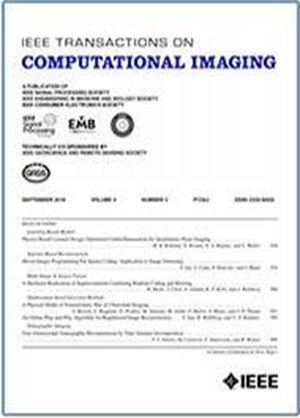基于联合学习离焦和图像重建的激光防护
IF 4.8
2区 计算机科学
Q2 ENGINEERING, ELECTRICAL & ELECTRONIC
引用次数: 0
摘要
我们提出了一种通过故意使所使用的光学元件离焦来增强传感器抗激光辐射的方法,并通过图像重建来重建所寻求的聚焦场景图像。离焦的引入使入射到传感器上的激光光斑变宽,大大降低了传感器的损伤潜力。我们采用编码孔径,并结合图像重建管道的自由参数对其模式进行优化。对于图像重建,我们将基于最先进的乘数交替方向方法(ADMM)的物理信息反褶积阶段与类似u - net的神经网络相结合,以去除剩余的重建伪影。为了评估我们提出的方法的性能,我们在模拟数据上进行了重建实验,包括烧蚀实验和真实数据,并在有和没有传感器保护的情况下进行了传感器破坏测试。增加激光功率的破坏性实验表明,我们的方法有可能将可容忍的辐射阈值提高约三个数量级。本文章由计算机程序翻译,如有差异,请以英文原文为准。
Laser Protection via Jointly Learned Defocus and Image Reconstruction
We propose a method to harden sensors against laser radiation by defocusing the employed optics on purpose, and to reconstruct the sought focused images of the scene via image reconstruction. The introduced defocus widens the laser spot incident on the sensor and greatly reduces its damage potential. We employ a coded aperture and optimize its pattern jointly with the free parameters of the image reconstruction pipeline. For the image reconstruction, we combine a state-of-the-art alternating direction method of multipliers (ADMM)-based physically informed deconvolution stage with a U-Net-like neural network to remove remaining reconstruction artifacts. To evaluate the performance of our proposed approach, we conducted reconstruction experiments on simulated data, including ablation experiments and on real data and performed sensor destruction tests with and without sensor protection. Destructive experiments with increasing laser power suggest that our approach has the potential to increase the tolerable radiation threshold by about three orders of magnitudes.
求助全文
通过发布文献求助,成功后即可免费获取论文全文。
去求助
来源期刊

IEEE Transactions on Computational Imaging
Mathematics-Computational Mathematics
CiteScore
8.20
自引率
7.40%
发文量
59
期刊介绍:
The IEEE Transactions on Computational Imaging will publish articles where computation plays an integral role in the image formation process. Papers will cover all areas of computational imaging ranging from fundamental theoretical methods to the latest innovative computational imaging system designs. Topics of interest will include advanced algorithms and mathematical techniques, model-based data inversion, methods for image and signal recovery from sparse and incomplete data, techniques for non-traditional sensing of image data, methods for dynamic information acquisition and extraction from imaging sensors, software and hardware for efficient computation in imaging systems, and highly novel imaging system design.
 求助内容:
求助内容: 应助结果提醒方式:
应助结果提醒方式:


